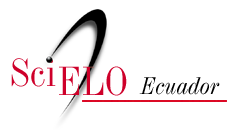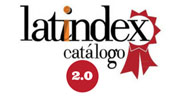Implementation of a fuzzy relational database. Case study: academic tutoring
DOI:
https://doi.org/10.29019/enfoqueute.v8n1.151Keywords:
Fuzzy relational data bases, Implementation of fuzzy relational data bases, fuzzy logicAbstract
This paper describes the process of implementation of a diffused relational database in the practical case of the academic tutorials of the Faculty of Engineering Sciences of the Equinoctial Technological University (UTE). For the implementation, the ANSI-SPARC database architecture was used as the methodology, which abstracts the information into levels, at the external level the functional requirements were obtained, at the conceptual level, the diffused relational model was obtained. To achieve this model, we performed the transformation of the diffuse data through mathematical models using the Fuzzy-Lookup tool and at the physical level the diffused relational database was implemented. In addition, an user interface was developed using Java through which data is entered and queries are made to the diffused relational database to verify its operation.
Downloads
References
A. Urrutia, L. T. (2008). FSQL and SQLF: Towards a standard in fuzzy database.
Barranco, C.D., Campaña, J.R., & Medina, J.M. (2008). Towards a Fuzzy Object-Relational Database Model. Recuperado el 2015, de Information Science Reference: http://www.infosci-ref.com
D. Anderson, D. S. (2008). Estadística para Administración y Economía. México: Cengage Learning Editores.
G. Bravo, G. R. (2012). Sistema de tutoría universitaria-SITUTOR. UTE.
Network, M. D. (2016). Obtenido de Fuzzy Lookup Transformation: https://msdn.microsoft.com/en-us/library/ms137786.aspx
Pérez, I., & León, B. (2007). Lógica Difusa para Principiantes - Teoría y Práctica. Caracas: Universidad Católica Andrés Bello.
Pressaman. (2010). Ingenieria de software. mexico.
R.M. Cicília, G. L. (2011). A fuzzy model for processing and monitoring vital signs in ICU patients. BioMedical Enginieering OnLine, 17.
Downloads
Published
Issue
Section
License
The authors retain all copyrights ©.
- The authors retain their trademark and patent rights, as well as rights to any process or procedure described in the article.
- The authors retain the right to share, copy, distribute, perform, and publicly communicate the article published in Enfoque UTE (for example, post it in an institutional repository or publish it in a book), provided that acknowledgment of its initial publication in Enfoque UTE is given.
- The authors retain the right to publish their work at a later date, to use the article or any part of it (for example, a compilation of their work, lecture notes, a thesis, or for a book), provided that they indicate the source of publication (authors of the work, journal, volume, issue, and date).
























